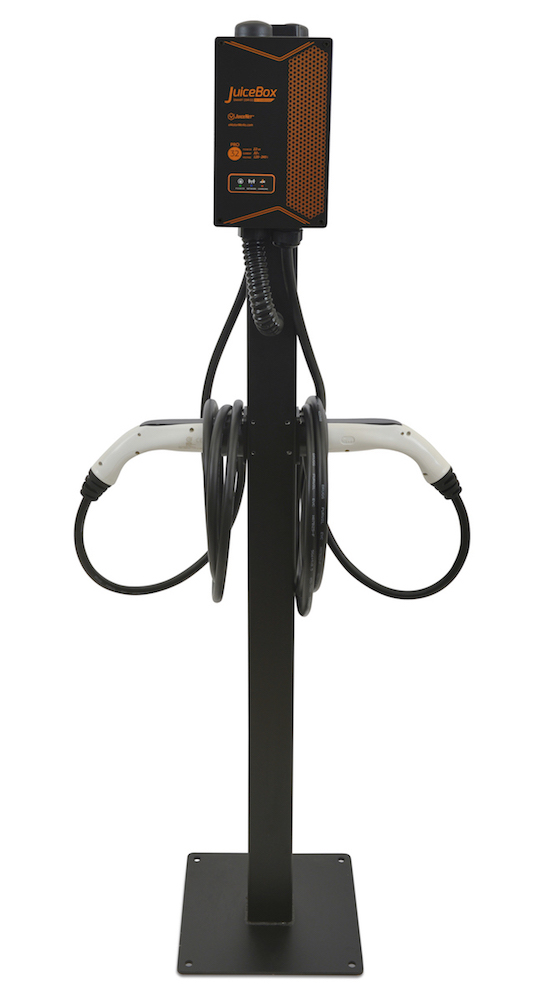

#Juicebox 32 plus#
The Pulsar Plus has an added benefit that the other big names in residential EV charging do not offer – solar charging. If you have two EVs in the same household this can be a much-need feature. Power sharing works by charging each car at a lower than normal power level so charging them at the same time doesn’t exceed your electrical capacity or energy consumption. You’ll have two or more chargers on the same circuit breaker. Power sharing enables you to use multiple chargers at the same time and distributes the electricity between the charging stations. This means if you have spotty internet connectivity or you don’t have access to the internet, your best bet would be the Wallbox.īoth chargers also offer power sharing through their apps. You can wirelessly connect to the Wallbox through WiFi or Bluetooth, while the Juicebox only offers WiFi connectivity. They both have Google Assistant and Amazon Alexa connectivity. You’ll be able to monitor the status of your home smart charger from anywhere you have access to a smartphone, remotely start or stop charging, view real-time statistics on use and energy consumption, and schedule your EV’s charge time for when electricity rates are cheapest. The Wallbox and Juicebox both offer many smart features that can be accessed through their respective apps, myWallbox and JuicePass. The Juicebox also comes in a 32-amp version called the Juicebox 32 and a 48-amp version called Juicebox 48. The plug-in NEMA 14-50 is $749, the NEMA 6-50 is $699, and the hardwired version is $749. The Juicebox is equipped with the standard SAE J1772 connector and can charge all EVs available for purchase in the U.S.
#Juicebox 32 install#
The rating is higher than the Wallbox’s, but both of them will be able to protect your Level 2 charger from dust and water whether you’re planning to install it in the garage or in the driveway. The Enel X Juicebox has a NEMA 4X rating, the equivalent of IP66, which is one of the higher IP ratings. Like the Wallbox, it comes in a hardwired or plug-in version ( NEMA 14-50 and NEMA 6-50 ). The screen has LED lights that show power, connectivity, and charging status.

It comes with a quick-release mounting bracket and a long 25-foot cable. It features a rounded rectangular box with a cable rack underneath. The Enel X Juicebox 40 has a sleek design and is white with a black cable. The 40-amp version is $649 and the 48-amp version is $699. The Wallbox has a standard SAE J1772 connector and can charge all EVs available for purchase in the U.S. The Wallbox has an IP54 rating, which means it is protected from dust, particles, and water sprays.
#Juicebox 32 upgrade#
A hardwired electric car charger is attached to the wall and is permanent, while a plug-in is portable and can be changed if you decided to upgrade or move. The 40 amp version is installed with a NEMA 14-50 outlet, while the 48 amp version must be hardwired. The 40 amp version weighs 18.2 pounds, while the 48 amp version weighs 20.9 pounds. It does not come with any cable mounting or racking. It has LCD indicator lights in between the two boxes. The design of a Wallbox is a gray box within a black box. The 48 amp is only available for a hardwired installation. The Wallbox Pulsar Plus comes in a 40 amp or 48 amp version. Wallbox vs Juicebox, which one should you buy? In this article, we’ll take a look at both chargers and detail their differences so you know which one is the better choice for you.


The Wallbox Pulsar Plus and Enel X Juicebox 40 are both efficient at charging EVs and have added smart features like power sharing and ways to control your energy consumption. While there are many different brands of EV chargers out there, Wallbox and Juicebox have some of the best residential EV charging stations on the market. Deciding which one is best for you and your EV can be difficult. Knowing you need a home electric car charging station is the easy part. If you’re exploring which electric vehicle (EV) charging station to buy you’re taking a big step towards simplifying your life and decreasing the amount of money you spend charging your car.


 0 kommentar(er)
0 kommentar(er)
